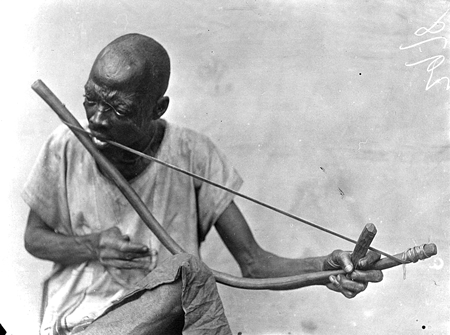|
Bobre
The bobre is a musical bow traditional in Mauritius and Réunion, particularly the traditional genres, sega and maloya. It is a long bow, made of wood with a vegetable fibre string, with a calabash acting as a resonator. It is played by striking the string with a stick. It is no longer used in Mauritian sega but is still popular in Réunion. It is also used in Maloya Maloya is one of the two major music genres of Réunion, usually sung in Réunion Creole, and traditionally accompanied by percussion and a musical bow. Maloya is a new form that has origins in the music of African and Malagasy slaves and Indian .... References Musical bows Mauritian musical instruments Réunionnais musical instruments {{mauritius-stub ... [...More Info...] [...Related Items...] OR: [Wikipedia] [Google] [Baidu] |
Sega Music
Sega (french: Séga) is one of the major music genres of Mauritius and Réunion. The other genres common in Mauritius are its fusion genre Seggae and Bhojpuri songs while in Réunion there is also seggae and maloya. It has origins in the music of slaves as well as their descendants Mauritian Creole people and is usually sung in Mauritian Creole or Réunionese Creole. Sega is also popular on the islands of Agaléga and Rodrigues as well as Seychelles, though the music and dances differ and it is sung in these islands' respective creole languages. In the past, the Sega music was made only with traditional instruments like ravanne and triangle, it was sung to protest against injustices in the Mauritian society, this particular version of the Sega is known as Santé engagé. Other types of Sega ( Traditional Mauritian Sega, Sega tambour Chagos, Sega tambour of Rodrigues Island) have been included in UNESCO's Intangible Cultural Heritage lists. Description The music's t ... [...More Info...] [...Related Items...] OR: [Wikipedia] [Google] [Baidu] |
Musical Bow
The musical bow (bowstring or string bow, a subset of bar zithers) is a simple string instrument used by a number of South African peoples, which is also found in the Americas via slave trade. It consists of a flexible, usually wooden, stick 1.5 to 10 feet (0.5 to 3 m) long, and strung end to end with a taut cord, usually metal. It can be played with the hands or a wooden stick or branch. It is uncertain if the musical bow developed from the hunting bow, though the San or Bushmen people of the Kalahari Desert do convert their hunting bows to musical use. Types of bow include mouth-resonated string bow, earth-resonated string bow, and gourd-resonated string bow. History There is speculation that the hunting bow may have been used as a musical instrument from as early as circa 13,000 B.C. Henri Breuil surveyed the Trois Frères in France caves and made an engraving that attempted to reproduce a c. 13,000 B.C. cave painting into a black-and-white lithograph engraving ... [...More Info...] [...Related Items...] OR: [Wikipedia] [Google] [Baidu] |
Mauritius
Mauritius ( ; french: Maurice, link=no ; mfe, label=Mauritian Creole, Moris ), officially the Republic of Mauritius, is an island nation in the Indian Ocean about off the southeast coast of the African continent, east of Madagascar. It includes the main island (also called Mauritius), as well as Rodrigues, Agaléga and St. Brandon. The islands of Mauritius and Rodrigues, along with nearby Réunion (a French overseas department), are part of the Mascarene Islands. The main island of Mauritius, where most of the population is concentrated, hosts the capital and largest city, Port Louis. The country spans and has an exclusive economic zone covering . Arab sailors were the first to discover the uninhabited island, around 975, and they called it ''Dina Arobi''. The earliest discovery was in 1507 by Portuguese sailors, who otherwise took little interest in the islands. The Dutch took possession in 1598, establishing a succession of short-lived settlements over a period of about ... [...More Info...] [...Related Items...] OR: [Wikipedia] [Google] [Baidu] |
Réunion
Réunion (; french: La Réunion, ; previously ''Île Bourbon''; rcf, label= Reunionese Creole, La Rényon) is an island in the Indian Ocean that is an overseas department and region of France. It is located approximately east of the island of Madagascar and southwest of the island of Mauritius. , it had a population of 868,846. Like the other four overseas departments, Réunion also holds the status of a region of France, and is an integral part of the French Republic. Réunion is an outermost region of the European Union and is part of the eurozone. Réunion and the fellow French overseas department of Mayotte are the only eurozone regions located in the Southern Hemisphere. As in the rest of France, the official language of Réunion is French. In addition, a majority of the region's population speaks Réunion Creole. Toponymy When France took possession of the island in the seventeenth century, it was named Bourbon, after the dynasty that then ruled France. To break ... [...More Info...] [...Related Items...] OR: [Wikipedia] [Google] [Baidu] |
Maloya
Maloya is one of the two major music genres of Réunion, usually sung in Réunion Creole, and traditionally accompanied by percussion and a musical bow. Maloya is a new form that has origins in the music of African and Malagasy slaves and Indian indentured workers on the island, as has the other folk music of Réunion, séga. World music journalists and non-specialist scholars sometimes compare maloya to the American music, the blues, though they have little in common. Maloya was considered such a threat to the French state that it was banned in the 1970s. It is sometimes considered the Reunionese version of séga. Description Compared to séga, which employs numerous string and wind European instruments, traditional maloya uses only percussion and the musical bow. Maloya songs employ a call-response structure. Instruments Traditional instruments include: *roulér - a low-tuned barrel drum played with the hands *kayamb - a flat rattle made from sugar cane tubes and seeds * ... [...More Info...] [...Related Items...] OR: [Wikipedia] [Google] [Baidu] |
Calabash
Calabash (; ''Lagenaria siceraria''), also known as bottle gourd, white-flowered gourd, long melon, birdhouse gourd, New Guinea bean, Tasmania bean, and opo squash, is a vine grown for its fruit. It can be either harvested young to be consumed as a vegetable, or harvested mature to be dried and used as a utensil, container, or a musical instrument. When it is fresh, the fruit has a light green smooth skin and white flesh. Calabash fruits have a variety of shapes: they can be huge and rounded, small and bottle-shaped, or slim and serpentine, and they can grow to be over a metre long. Rounder varieties are typically called calabash gourds. The gourd was one of the world's first cultivated plants grown not primarily for food, but for use as containers. The bottle gourd may have been carried from Asia to Africa, Europe, and the Americas in the course of human migration, or by seeds floating across the oceans inside the gourd. It has been proven to have been globally domesticated (an ... [...More Info...] [...Related Items...] OR: [Wikipedia] [Google] [Baidu] |
Resonator
A resonator is a device or system that exhibits resonance or resonant behavior. That is, it naturally oscillates with greater amplitude at some frequencies, called resonant frequencies, than at other frequencies. The oscillations in a resonator can be either electromagnetic or mechanical (including acoustic). Resonators are used to either generate waves of specific frequencies or to select specific frequencies from a signal. Musical instruments use acoustic resonators that produce sound waves of specific tones. Another example is quartz crystals used in electronic devices such as radio transmitters and quartz watches to produce oscillations of very precise frequency. A cavity resonator is one in which waves exist in a hollow space inside the device. In electronics and radio, microwave cavities consisting of hollow metal boxes are used in microwave transmitters, receivers and test equipment to control frequency, in place of the tuned circuits which are used at lower freque ... [...More Info...] [...Related Items...] OR: [Wikipedia] [Google] [Baidu] |
Maloya
Maloya is one of the two major music genres of Réunion, usually sung in Réunion Creole, and traditionally accompanied by percussion and a musical bow. Maloya is a new form that has origins in the music of African and Malagasy slaves and Indian indentured workers on the island, as has the other folk music of Réunion, séga. World music journalists and non-specialist scholars sometimes compare maloya to the American music, the blues, though they have little in common. Maloya was considered such a threat to the French state that it was banned in the 1970s. It is sometimes considered the Reunionese version of séga. Description Compared to séga, which employs numerous string and wind European instruments, traditional maloya uses only percussion and the musical bow. Maloya songs employ a call-response structure. Instruments Traditional instruments include: *roulér - a low-tuned barrel drum played with the hands *kayamb - a flat rattle made from sugar cane tubes and seeds * ... [...More Info...] [...Related Items...] OR: [Wikipedia] [Google] [Baidu] |
Musical Bows , the ability to perceive music or to create music
*
{{Music disambiguation ...
Musical is the adjective of music. Musical may also refer to: * Musical theatre, a performance art that combines songs, spoken dialogue, acting and dance * Musical film and television, a genre of film and television that incorporates into the narrative songs sung by the characters * MusicAL, an Albanian television channel * Musical isomorphism, the canonical isomorphism between the tangent and cotangent bundles See also * Lists of musicals * Music (other) * Musica (other) * Musicality Musicality (''music -al -ity'') is "sensitivity to, knowledge of, or talent for music" or "the quality or state of being musical", and is used to refer to specific if vaguely defined qualities in pieces and/or genres of music, such as melodiousnes ... [...More Info...] [...Related Items...] OR: [Wikipedia] [Google] [Baidu] |
Mauritian Musical Instruments
Mauritians (singular Mauritian; french: Mauricien; Creole: ''Morisien'') are nationals or natives of the Republic of Mauritius and their descendants. Mauritius is a multi-ethnic society, with notable groups of people of South Asian (notably Indian), Sub-Saharan African (Mauritian Creoles), European (European Mauritians), and Chinese descent, as well those of a mixed background from any combination of the aforementioned ethnic groups. History Mauritian Creoles trace their origins to the plantation owners and people who were captured via the slave trade and brought to work the sugar fields. Plantation owners were predominantly of European ancestry while the enslaved people mostly had ancestry from continental Africa. When slavery was abolished on 1 February 1835, an attempt was made to secure a cheap source of adaptable labour for intensive sugar plantations in Mauritius. Indentured labour began with Indian, Chinese, Malay, African and Malagasy labourers, but ultimately, i ... [...More Info...] [...Related Items...] OR: [Wikipedia] [Google] [Baidu] |


